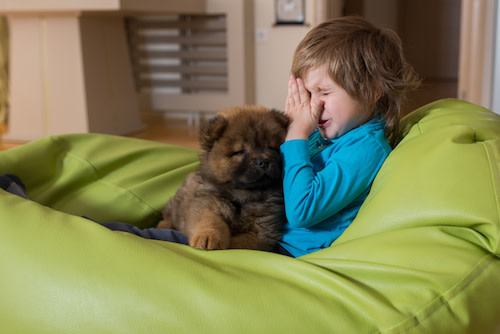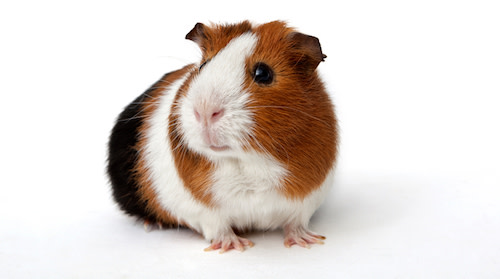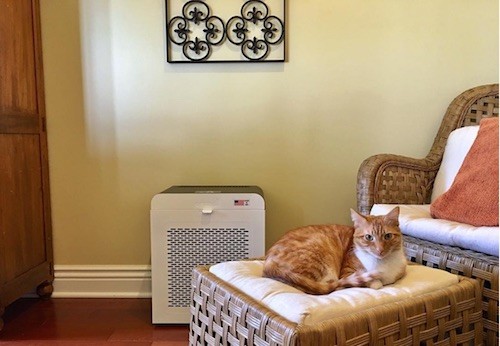What is Pet Dander? How it Affects Your Indoor Air Quality
In fact, it’s one of the top sources of indoor air pollution.
However, it is possible to have pet allergies and live with pets.
But it takes knowledge, care, and a thorough understanding of animal dander to reduce the air contaminants and keep your body healthy, all while enjoying the company of your favorite furry friends.

What is Pet Dander?
Many people assume that pet dander is simply pet hair, but that’s inaccurate.Pet dander is in fact dried skin cells from pets; skin cells that are so light they float in the air but eventually settle on surfaces like furniture and carpet. Pet dander is so small that it is often microscopic, although you may be able to see larger particles on your dog or cat’s back; it’s essentially the pet’s dandruff.
While animal dander is skin cells, hair does play an important roll. It acts like a vehicle for the dander to move around. The pet’s hair, after being shed, often holds minute particles of skin, which is then carried and released at random times.
The result is that dogs with lots of hair, or at least more shedding, are more likely to spread dander.
Cats: The Allergy-Causing Proteins

According to an article from LiveScience, roughly 10% of the American population has pet allergies, but cat allergies are twice as common than dog allergies.
It’s believed that this significant difference is caused by a protein found on cats’ skin, called Fel d 1. This protein is particularly upsetting to allergies because of its size.
It is so small that it stays airborne for much longer, leading to prolonged and sustained exposure. The protein is also sticky, so it remains on surfaces much longer.
It’s believed that male cats that have not been neutered produce the most Fel d 1.
Are Some Pets Better than Others?
If you suffer from allergies, you’ve likely considered “hypoallergenic” pets.
Sorry to break it to you, but there is no such thing as a 100% hypoallergenic dog or cat.
However, there are furry friends that give off fewer skin cells. So while a hypoallergenic dog is technically impossible, there are options for reducing your allergies.
Dog Breeds: The Best and Worst for

The American Kennel Club has provided some excellent information on the subject of hypoallergenic dogs. According to their research and experience, breeds like the poodle, schnauzer, and American hairless terrier, as well as others, are great choices for reducing allergens in the home.
There are, of course, dogs that are more likely to cause allergies.
As we said before, the allergies are caused by skin cells, not hair, but high-shedding dogs are often the worst for spreading dander.
It’s not just thick-coated animals like German shepherds and St. Bernards. Hound dogs can be particularly bad, but you should also watch out for dogs that tend to drool, as this can cause allergy problems as well.
Cat Breeds: The Best and Worst
There are various cat breeds that are good for allergy sufferers as well.According to PetMD, a pet information site with information “written and approved by...veterinarians,” the most popular low-allergy cats are Siberian and Balinese, which each have less Fel d 1 proteins.
So, what are the worst types of cats for allergies?
Tomcats are generally considered more likely to cause allergies, and there is evidence that black or dark-colored cats are more likely to cause an issue with allergies. Although the exact reasons are not known, there is a theory that higher amounts of pigmentation in darker cats cause more Fel d 1.
The reason, however, is not completely clear.
Hypoallergenic Pets: Not Just Dogs and Cats!
It’s easy to forget that we’re not just limited to dogs and cats for pets.Sure, these are far and away the most popular animals, but if you want a pet that is less likely to cause allergies, you can find many interesting options.
As an added bonus, you’ll have a wonderful conversation piece for your next party!

If you want a “hypoallergenic” pet, you can choose unique animals like hamsters, gerbils, and Guinea pigs.
While these animals still give off dander, the very nature of their size means fewer skin cells are spread around. However, if you do have allergies, cleaning and caring for these pets can still be difficult.
Fortunately, there are even more unique options...
For a hypoallergenic (and interesting) pet you could choose a snake, frog, iguana or another type of household amphibian, lizard, or reptile.
Although there are rare cases of allergies to these animals, they are often safe for allergy sufferers because there is little to no dander.
Prevent Pet Allergies in Children by Exposing them to Animals
Are you a new parent?Do you want to do your best to prevent allergies in your kids?
Do you want to give your spouse an excuse to finally get the dog you’ve wanted for years?
Research is starting to show that exposure to pets at a young age may reduce the chances of allergies. Research that has been documented in Time magazine and other publications demonstrates that children who live with pets, specifically cats and dogs, are less likely to develop allergies to the specific animal.
However, it appears the effects only occur when the pet is in the home when the child is an infant. (If you introduce a pet after infancy, there appears to be no difference.)
The research found that children born into a home with cats were half as likely to be allergic to the animals in their teenage years.
However, being exposed to pets after the first year appears to have no significant impact on the chances of allergies.
These types of findings have been found in many other studies, although more research is needed to make concrete claims about childhood exposure and pet allergies.
What are the Health Threats from Pet Dander?
In most cases, the problems for pet dander comes from allergies. So, if you’re going to understand the risks of pet dander, you need to understand allergies.Allergies are essentially an overreaction by the body’s immune system to foreign substances.
For example, if you have harmful bacteria, your body attacks the bacteria and, over time, eliminates it from the body.
However, sometimes the immune system attacks substances that are not inherently harmful, such as pet dander.
If you are allergic to pets, whenever you breathe in pet dander, your immune system goes into overdrive and tries to destroy the invaders. Unfortunately, this natural reaction causes more problems than the substance itself.
When you have an allergic reaction to pet dander, you can have runny noses, itchy and watery eyes, coughing, and sneezing.
Some people may also have skin reactions from pet allergies.
In many cases, if someone is allergic to dogs and a dog licks their arm, they may breakout in a rash or develop hives.
If someone has asthma and pet allergies, it can create even more-significant problems.
Pet Allergies vs a Common Cold
Sometimes it can be hard to tell if a person has symptoms of pet allergies or if they are simply suffering from a common cold.Both can involve sneezing, coughing, and runny noses, but there are often some obvious signs that point to pet allergies.
The first, and most noticeable, is the presence of pets. If you visit a home with dogs or cats, and you notice symptoms within the first few minutes, it’s more likely that you are allergic to pet dander. This is especially true if you notice the pattern on a repeat basis.
Sometimes allergies come on gradually, or they come on after you’ve visited a specific location, which makes diagnosis more difficult.
However, many allergic reactions are accompanied by rashes or itchy eyes. If you notice these symptoms, it’s more likely you have allergies.
But if you have body aches, it’s more likely that you have a cold.
The Best Air Purifiers for Pet Dander

There are many steps you can take to remove or reduce pet dander and other allergens from your home. One step is to use air purifiers, which will clean air and remove harmful pollutants.
There is evidence that a room air purifier can be beneficial for reducing allergies.
According to a report published in Current Allergy and Asthma Reports, air filtration is one of the “methods to improve outcomes in the treatment of allergic respiratory diseases.”
However, it’s important to choose the right air purifier for pet dander and allergies.
Max HEPA Air Purifier
The Max air purifier is one of the most effective and reliable air purifiers for removing pet dander from your home. With this purifier, you can effectively remove over 99% of all airborne particles from the air in your home.This will bring better air quality to your house and enhanced health for anyone suffering from pet allergies. It is excellent for bedrooms, offices, and living rooms, and make a convenient addition to any living space.
OV200 Air Purifier
With the OV200 air purifier in your home, you’ll be able to remove roughly 98% of all airborne allergens in the home. It has a narrow, compact profile, which makes it ideal for bedrooms, offices, and other small spaces. It uses a HEPA and carbon filtration system, with no ionizer or electronic device.Erik 650A Air Purifier
Using a MERV18 HEPA filter, Erik 650A air purifier removes a whopping 99.99% of all particles, making it one of the most effective products on the market. It is used for large spaces and medical facilities, and can be used to remove allergens such as pet dander, as well as mold spores, particles, and dust.The Right Purifier for Any Need, Any Space
No matter where you live of what you need to remove from your indoor air, Oransi a high-quality purifier that will meet your needs.
From high-powered purifiers for commercial space to small units for single bedrooms, we have the right air purifying products to keep you and your family happy and healthy!
